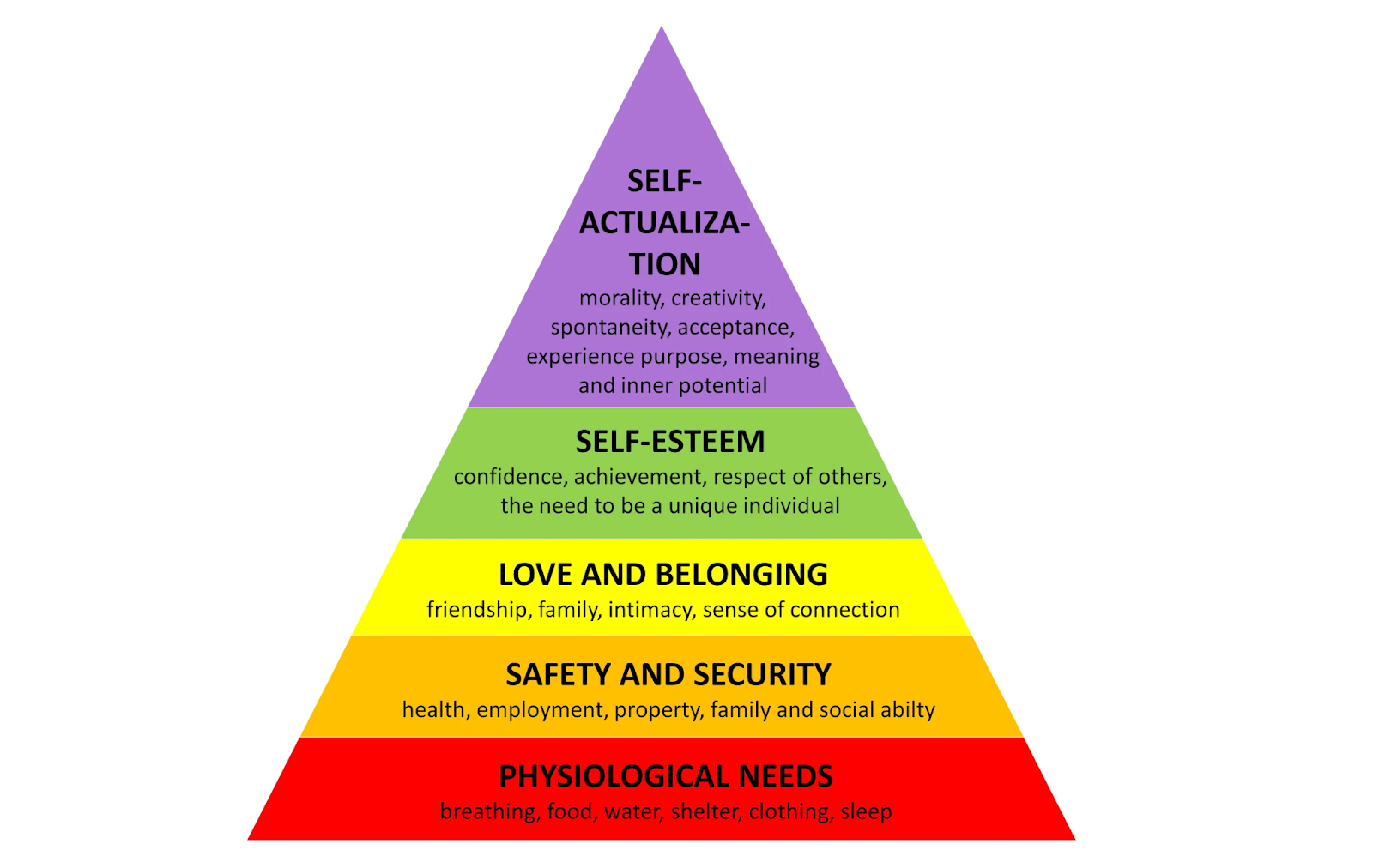Real estate is often considered one of the best investments that you can make, and passive income is one of the most alluring ideas in personal finance. So the question is, can you bring the two together and end up with a high-quality investment asset that appreciates over the long term but also adds to your income month after month?
This guide takes a deep dive into exactly that, outlining how passive real estate investing works, and exactly how you can slice yourself a piece of the pie!
Jump ahead to:
- What is Passive Real Estate Investing?
- Types of Passive Real Estate Investing
- Why Consider Passive Real Estate Investing?
- What to Consider When Investing in Real Estate
- How to Start Passive Real Estate Investing in 8 Simple Steps
- How to Know if Your Passive Real Estate Investment is Performing Well
- Start Your Real Estate Journey with Whop's Communities
- FAQs
What is Passive Real Estate Investing?
Passive real estate investing is a strategy that allows you to reap the rewards of real estate investment without the obligation to actively manage the property. To put it simply, you’re able to earn an income from real estate without having to be a landlord.
This makes a huge difference, because being a landlord–and a good one, especially–is a lot of work. There are a lot of responsibilities if you want to actively invest in real estate, from things like maintenance and repairs all the way to tenant screening.
Furthermore, passive real estate investing is a subset of passive investing, which is characterized by the fact that you’re building a low maintenance income stream. The money that you put in begets more money—there’s no active management of a portfolio, no trading, and no other tasks. All you need to put in is capital.
Types of Passive Real Estate Investing
While difficult to get into, even as recently as a couple of decades ago, there are now several options for the prospective passive real estate investor. The top options are:
#1. Property Manager
The closest option to traditional real estate investing, this one involves the direct purchase of a rental property before hiring a property manager to oversee operations and manage things on your behalf.
It will involve quite a lot of decision-making since you may want to set a certain limit on the property manager’s autonomy, and there’s also a significant amount of risk involved since you’re directly responsible for ownership and management.
It’s also possible to find turnkey properties that you can invest in this way, with many firms offering turnkey properties paired with a property manager or property management services. That means you don’t need to worry about filling vacancies or signing leases, although you’ll definitely want to put some effort into researching the property management firm itself.
Ownership: Direct
Liquidity: Medium
Capital Outlay: Very high (buying entire properties yourself)
#2. Real Estate Syndication
Syndication means joining together with other large parties to share investment risk, and it’s very possible to do this for the purpose of real estate investment. You’ll be pooling funds with other investors and letting one party manage the property, and the entire syndicate may be structured in different ways, such as a limited partnership.
One of the most common forms of real estate syndication you’ll see is the real estate investment group (REIG), and while going down this route can be highly profitable, you do need to be aware of the lower liquidity involved. Your money may be tied up in syndication for a lot longer than some of the other options.
Ownership: Indirect
Liquidity: Low
Capital Outlay: High
#3. Crowdfunding
Similar to syndication, but the key difference is that crowdfunding is accessible to far more people contributing far smaller amounts. Crowdfunding platforms allow you to buy in for as little as a couple of hundred dollars, a far cry from either of the two previous options.
That said, crowdfunded real estate investments are also illiquid, and your funds can be tied up for as long as it takes for the project to be seen through to completion. Still, the amount of cash that’s getting tied up is much lower, which opens up potential for diversification—you can easily build up a passive real estate investment portfolio consisting of several crowdfunded projects as well as instances of the next two options on this list!
Ownership: Direct
Liquidity: Low
Capital Outlay: Low
#4. Real Estate Investment Trusts
REITs have been around for a while, but they’ve become extremely popular in recent years thanks to the boom in online investing. A REIT is a company in itself, one whose sole purpose is to own, operate, or finance real estate.
The secret sauce here is that investors can buy shares in these companies just like any other exchange-listed stock, and thereby attain indirect exposure to the real estate owned by the company.
Granted, you get exposure to the real estate owned by any company when you buy their stock, but REITs are dedicated to maximizing the returns from the real estate under their umbrella, and often specialize in a certain type of real estate such as commercial, industrial, residential, etc.
Since you’re investing in REITs via the stock market, it’s an extremely liquid way to get involved, and 90% of the taxable income from the real estate is distributed in the form of dividends. However, there’s a lot less control over what specific pieces of real estate the company invests in, and stock market volatility can affect your investment.
Ownership: Indirect
Liquidity: High
Capital Outlay: Low
#5. Fractional Ownership
Crowdfunding and syndication also represent fractional ownership in real estate, but it’s worth mentioning separately because there are newer and innovative forms of fractional ownership starting to emerge.
Some real estate tokenization platforms allow you to directly own portions of specific properties, for example, and the most cutting-edge of these actually tokenize the properties using blockchain technology.
The benefit to the investor in this type of platform comes down mainly to transparency and security, but it’s also worth considering that blockchain tokens can be transferred easily—which solves the liquidity issue inherent to options like crowdfunding and syndication.
Ownership: Direct
Liquidity: Variable (high if tokenized)
Capital Outlay: Medium
Why Consider Passive Real Estate Investing?

You’ve probably seen or heard of Maslow’s hierarchy of needs before, and it’s just as important in business as it is in the world of psychology. Humans can’t live without what’s in the bottom tier of the pyramid, and real estate (residential real estate, at least) is firmly in that category.
Which, in turn, means constant demand. On a fundamental level, therefore, it makes excellent sense to invest in real estate because we, as humans, need it to survive—and geopolitical risks and environmental or biological catastrophes aside, the human race looks set to keep on multiplying.
This most fundamental of arguments makes real estate a generally sensible investment, although it’s wise to apply some caution.
US bankers’ readiness to loan out money to home buyers and Wall Street’s gross failures in real estate investment-related risk management collapsed the world economy in 2008, and the world of commercial real estate is currently teetering thanks to the revelation that people work better from home than in an office.
Benefits of Passive Real Estate Investing ✅
With the primary allure of real estate firmly in place, let’s take a granular look at some of the key benefits of passive real estate investing:
- Passive income
Passive income is one of the most valuable types of income for any investor since it requires no additional investment of time or effort. Multiple passive income streams can add up nicely whether you’re looking to live off passive income and not have to work or simply complement your primary income stream. - Growing your wealth
Passive income can be reinvested like any other dividend to give your wealth the benefits of compound interest growth. On top of that, real estate has a history of reliable appreciation, so you can win on both fronts by getting into passive real estate investing. - Hedging against inflation
One of the main reasons to invest cash rather than keep it lying around is inflation. One look at the historical trends of property values over time should convince you that real estate is an asset worth owning—properties that cost several hundreds of thousands today were affordable on a blue-collar wage just a couple of generations ago. - Tax benefits
Real estate investments can offer tax benefits such as deductions for things like depreciation and mortgage interest. - Diversify your portfolio
Diversification is considered a fundamental principle of risk management in investment, and real estate can be a valuable addition to any portfolio in this sense. It behaves very differently from other asset classes and tends not to be directly correlated to common investment vehicles such as stocks and bonds. - Professionally managed properties
One of the major benefits of passive real estate investment is that you’re generally turning the management of the property over to professionals. You may not have the time or experience to deal with the responsibilities of being a landlord, so this can be a big benefit.
Risks of Passive Real Estate Investing ❌
Despite the abundance of benefits when it comes to passive real estate investing, there are several challenges and risks to be aware of:
- Interest rate risk
While real estate tends to be an excellent inflation hedge, rising interest rates can be a huge problem, especially if you take out a variable interest rate loan to finance your investment. That’s what happened in 2008 to home buyers and it can still happen, although it’s less of a risk with options like REITS and fractional ownership since you don’t need to invest so much money. - Liquidity
In the context of investing, liquidity is crucial because it refers to how quickly you can cash out and put money elsewhere in case of an emergency. As a rule, real estate is far less liquid than assets like bonds or stocks which are traded every day. Again though, REITs and tokenized real estate are exceptions to this rule. - Property management and control
Property management isn’t easy, and there are lots of regulations to follow and risks to mitigate. That’s why it’s good that most passive real estate investment options are professionally managed—but this means you need to do your due diligence on the firm responsible. You don’t have direct control over the asset, so make sure you trust the people who do. - Tenants
Tenants are the people (or companies) who rent out the properties you invest in and provide the passive income you’re looking for. There can be plenty of issues with tenants, whether private or corporate—so it’s good to have an idea of the tenant profiles and average tenancy where you invest, or understand the companies likely to want the property you’re renting out. - Tax implications
We’ve mentioned that there can be tax benefits when you invest in real estate, but there are also implications to watch out for. Unexpected tax bills are a nasty surprise, so do your homework or consult with a professional first. - Volatility
While traditionally considered safe and stable, the real estate market can still be affected by significant volatility. Changing trends can also cause major shifts in the market, such as the COVID 19-accelerated acceptance of working from home putting stress on the commercial real estate sector. - Regulatory changes
Real estate is subject to plenty of regulation and property values can be drastically affected by law changes, so this is something to keep a close eye on if you get into passive real estate investing.
What to Consider When Investing in Real Estate

If and when you do decide to take the plunge into passive real estate investing, you might start to wonder what constitutes a good piece of real estate. It’s easy with assets like stocks where you’re looking at either easily measurable fundamentals or market sentiment via technicals. With real estate there’s often a lot to take in, so here’s a primer!
Market Conditions
Passive real estate investing is a medium or long-term game, so one of the biggest things to consider is the fundamentals of not just the property itself but also the market. You’ll need to study how the market works and what the underlying trends are, figure out the tenancy rates and what influences them, and keep an eye on both the prevailing and long-term economic situation. Understanding the market conditions in the real estate sector can help you analyze individual properties or investment options in context, which is critical for making a good decision.
Location, Location, Location
You’ve probably heard that one before, but it’s repeated for a reason. A fantastic property can have next to no value if it’s in the wrong neighborhood, so it’s good to look at the immediate area and get a feel for what’s going on. Different areas can have different regulations too, and if you’re investing in residential property, you’ll need to understand the dynamic of the local residents as well as employment rates and economic health. It can really pay to figure out what the area’s future development plans are too—gentrification can be a gold mine, but things can also go in the other direction.
Property Type
We’ve mentioned property types already, but it’s worth underlining that there’s a huge difference between residential, commercial, industrial, and retail. The market for each type is radically different in almost every way, which is why companies like REITs tend to specialize in one area or another. It might even be worth finding one particular type of property to really study and understand, although you could grab a bit of each in order to diversify—residential tends to be a stable option for any portfolio, while commercial provides more income but has much higher risk.
Laws and Politics
There are a lot of legal and regulatory aspects to understand when it comes to real estate, so you’ll need to at least look into the basic legal framework around a property and what’s going on in a political sense. Things like zoning laws and property rights have to be followed, so your investment could crater if your property managers don’t do their job in this regard. Upcoming regulatory changes could also affect things going forward, and so could a shift in the political climate—for instance, if a professional and educated higher-income area suddenly starts to shift to the political right, those educated professionals are likely to move out, cratering the fundamentals of your investment.
Your Style and Strategy
Just like with any other type of investing, your own personal investing style, financial goals, and appetite for risk needs to come into play. Passive real estate investing is generally carried out over the long term, but there’s a huge difference between taking out a big loan and buying a property managed piece of real estate versus dollar cost averaging into a small basket of REITs.
How to Start Passive Real Estate Investing in 8 Simple Steps
Now that you know all about the different types of passive real estate investment out there, what the benefits and risks are as well as what to consider when making investments, all that remains is to build a roadmap of how to get started.
Step #1: Analyze Your Situation
The journey toward passive real estate investing begins with a thorough, honest analysis of your own financial situation. Do you have any major liabilities that take priority? What are your incomes and expenses? What’s your credit score like? Are you looking to invest a portion of your disposable income, borrow money, or did you just come into an inheritance? Figuring out your financial situation will help you build a set of parameters in terms of what options are on the table going forward.
Step #2: Set Goals
Now that you know what’s possible given your financial situation, it’s time to set some investment goals and targets! This is where your risk tolerance comes in, along with what exactly you want out of your investment—some investors are hyper-focused on maintaining that passive income through steady rentals, while others are after long-term capital appreciation.
Step #3: Study the Market
With steps one and two out of the way, you can now take a detailed look at the market to try and narrow your focus. This is where you need to develop an understanding of what the different options are in terms of property types, how different locations work (from different countries and different states all the way down to different neighborhoods in a given area depending on your scope) within the context of your investment goals. It’s also worth finding a real estate investing community so that you can exchange insights with others!
Step #4: Develop a Strategy
Armed with information as well as context, you can start making decisions. You might decide to invest in a certain way (REITs versus Syndication, for example) and have selected certain locations and property types of interest. You’ll also need to look at exactly how to invest, which means things like identifying brokers that give you access to REITs or real estate tokenization platforms.
Step #5: Do Your DD
You’ve already done plenty of research, but now it’s time to take it to the next level. You couldn’t research every property type and location in detail before, but now that you’ve developed a clear strategy, it’s time to knuckle down and make sure you cover every aspect of that strategy. If you’ve identified a certain area, try to visit it and research its representatives. If you’re looking at a REIT, check their track record and credibility, and make sure you’ve got the right brokerage platform lined up.
Step #6: Consult Pros
Before taking the leap, it’s worth talking to professionals about your plan. Whether it’s a financial advisor or tax professional, seeking advice from a licensed pro or fiduciary is never a bad idea since there are bound to be considerations that you haven’t thought about. Even if you’ve covered every single one of your bases, doing this will give you some more peace of mind.
Step #7: Begin Execution
With all of that done, it’s time to finally start executing your strategy. You can now get the ball rolling with confidence, although with some types of passive real estate investment such as REITs and crowdfunding, you can still take it slow and ease yourself in.
Step #8: Monitor and Re-evaluate
As you go, it’s important to keep an eye on how your investments are doing. This doesn’t mean a daily check on your portfolio, but it does entail a regular look at how your strategy is playing out. After a while, you may have to re-evaluate your strategy and make small changes based on the experience you’ve gained in the market or shifting financial goals.
How to Know if Your Passive Real Estate Investment is Performing Well

Some investments are easier to monitor than others. With a stock, for example, green is generally good, and you know it’s going well if your portfolio is outperforming the overall market index. But what of passive real estate investments? Since they are a lot more nuanced, here are a few things to look out for:
- Total returns
Starting with the easiest metric, you can analyze the overall returns on your investment and then compare it to other investments to judge performance. To calculate total return, look at how much income you’ve accrued, add how much the properties have appreciated, and then deduct costs. - Key metrics
There are some crucial metrics in real estate that you’ll come across when researching the market, and you should keep an eye on these. Look at your properties through the lens of occupancy rate, which shows their rental health, and rent growth. Then there’s capitalization rate, which compares net operating income to property value. - Risk-adjusted returns
We’ve mentioned that risk tolerance is a big factor when investing, and different types of properties might entail different levels of risk. Factor this in when looking at returns—if two properties earned the same level of returns despite having different risk profiles, then either the high-risk one performed poorly or the low-risk one did well. This information in turn may prompt you to rebalance your allocations. - Fees and costs
These already factor into your returns, but it’s worth digging into. Make sure that you haven’t missed any fees, and stay on top of management fees. If these costs get out of hand, they can really eat into your returns. - FFO in REITs
Funds from operations is something to keep an eye on if you’re investing in REITs because it equates to earnings from stocks. You want this number to be as strong as possible.
Start Your Real Estate Journey with Whop's Communities
Passive real estate investing is a type of investing that requires plenty of research and a lot of care, but there are tremendous upsides if you do it right. Real estate has historically proven to be one of the best investment assets out there, and getting into it passively means that you don’t need to get involved in the active management of property or dealing with tenants.
There’s no better way to learn the ins and outs of real estate investing than finding a community of other like-minded individuals to guide you through the process. Whether it’s experts who have been there and done that to others like you still learning the ropes but happy to exchange notes, you can find the perfect real estate community right here on Whop!
FAQs
What is the easiest passive real estate investing strategy?
REITs are the easiest passive real estate investing strategy thanks to how many brokerage platforms there are and how accessible they are. As long as you’re of age and your financial situation is in order, you should be able to buy into REITs with a minimum of fuss.
What’s the risk of passive real estate investment?
There are a lot of risks when it comes to passive real estate investment, just like with any other investing style or asset class. There can be tax implications, market volatility or outright crashes such as in 2008, regulatory risks, and tenant risks even though you’re not actively managing the properties you’re investing in.
Does passive real estate grant tax advantages?
Yes, you may be able to get deductions on mortgage interest and depreciation.
How much do I need to get started?
This depends on what type of investing you’ll be doing. You can buy into REITs or crowdfund with a couple of hundred bucks, but fractional ownership could range to four or five figures depending on the platform you choose.





